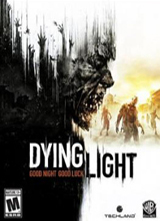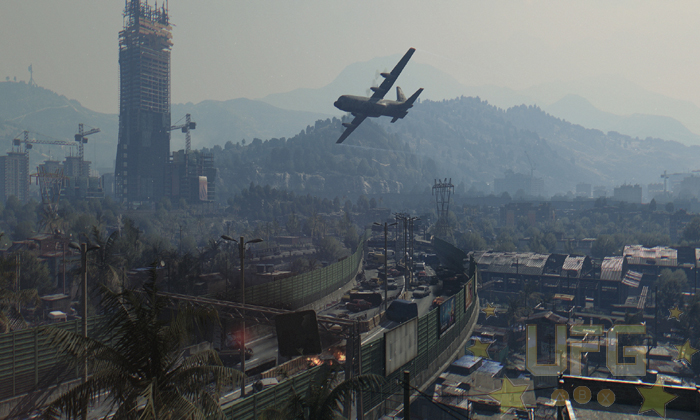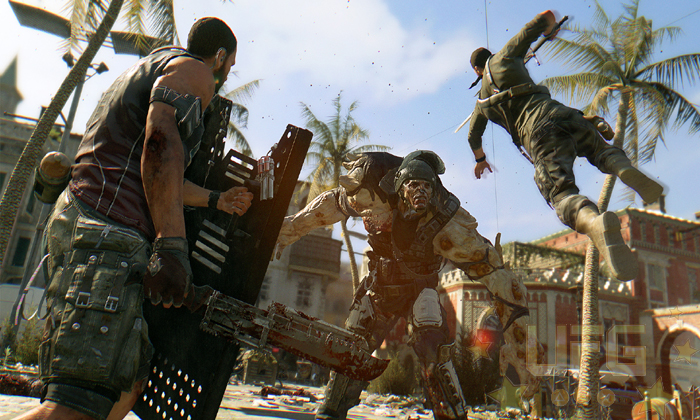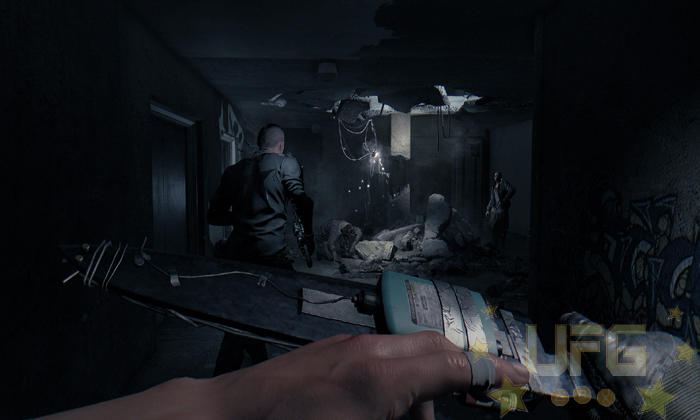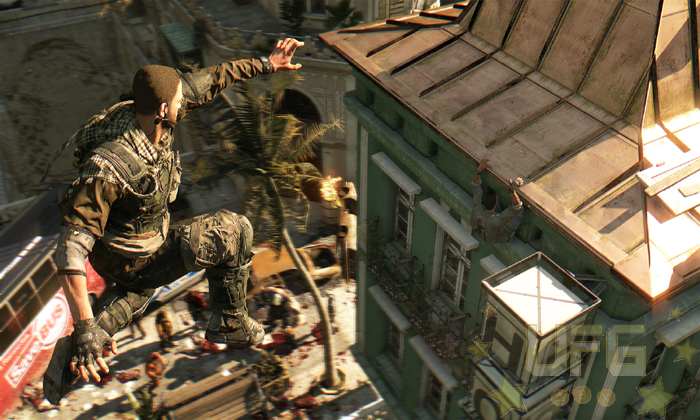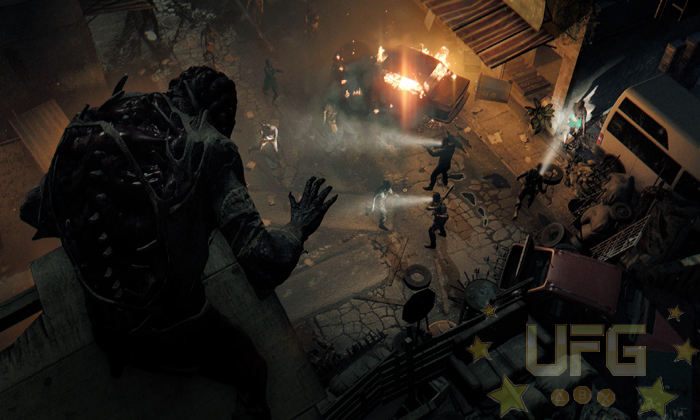Dying Light
Some time ago I got word about a new zombie/survival horror title that would encompass an intriguing day and night cycle and free running mechanics. With just the promise of those two elements, I knew it was a game to watch out for. But as a fan of Dead Island, and Techland in general, I couldn’t wait to play Dying Light…even if it was ultimately destined to be a better Dead Island as opposed to something entirely new!
Dying Light’s narrative takes place in the fictional city of Harran, two months after a zombie outbreak. The Global Relief Effort (or GRE) has been airdropping supplies to the survivors trapped within the quarantine city. Unfortunately, this charitable organization came under attack; one of their own has stolen secret files in an effort to blackmail them for some nefarious reason. Kyle Crane, an undercover agent, is sent into Harran to recover the files before the information can be leaked to the public. If this assignment wasn’t already tough enough with zombies everywhere, the GRE instructs Crane to do whatever he can to track down the culprit even if it means harming innocent people.
Techland’s latest zombie romp seems to be stuck between being a great game and a mediocre one. Thankfully, it leans toward the former rather than the latter. Take the premise, which is a little more than a fancy B-movie checklist. You got your shady corporations, eccentric yet clichéd antagonist, overdramatic acting and poor dialogue. While that’s the case, I feel that the developers meant to make something that would resonate with gamers. The big evil corporation and Rais (the person that stole the GRE’s files) helped to elicit the player’s hate in convincing enough ways. And even though the script wasn’t great, the voice acting was decent. I mean, I genuinely believed that a character was experiencing emotional turmoil, even if the reason they were upset seemed forced. Altogether, the plot was basically a tool to get you moving through Harran and for that goal, it worked out fine.
When it comes to the moment-to-moment gameplay it fares a little better than the story. Like Dead Island, you’ll utilize an assortment of melee weapons to fight off the undead. Baseball bats, crow bars, a sword stuck in a stone – whatever isn’t nailed down you can use to bash in a zombie’s skull. Speaking of nails, by collecting the right items and blueprints, you’ll be able to modify these weapons into something more deadly. This can range from the realistic (a spiked bat) to the absurd (an electrified bat with a nozzle that spews poison). There are guns and explosives but they’re scarce during the early portion of the campaign. The zombies you encounter will also be familiar. There are the slow moving zombies that make up the majority of your adversaries and the fast moving ones that chase after you. Then there are the special ones like the Toad who spits acid and the Bombers that explode when you get to close to them. The last group is the Volatile which only come out at night – I’ll come back to them.
The mission structure is also typical of this type of game. NPC’s will provide quests, prompting an icon to appear on the map. Once you reach the location and complete the objective – kill a certain amount of zombies, collect an item(s), or restore power to something – you’ll then head back to the NPC to collect your reward. There are random occurrences as well. You may stumble onto a person being attacked by a group of zombies for instance. These are completely optional, allowing you to gain some experience points to level up and some cash if you choose to help. There are other diversions/challenges scattered across the map that will soak up most of your time if you let them.
All of these elements are implemented fairly well. Though they’ve been frequently used in past games, they don’t undermine the overall experience…you know, “if it isn’t broke” and all that. Completing missions, leveling up Crane, and dispatching zombies are fun for the most part. The weapon degradation system, however, needs a major overhaul. In its current state it’s much too sensitive. I understand why Techland would want such a system as it amplifies the innate tension of the survival horror side of things. Having to regroup after your table leg snaps in half or your knife breaks will certainly elicit feelings of panic. It also forces you to continually search for new items to fight with, promoting exploration. So, yeah I get it. The problem with the system though is that a lot of the weapons break with just a few swings. Since the zombies can take a considerable amount of damage before dying, the weapons, regardless of if they are crafted or found, become quite ineffective. It doesn’t make sense, realistically speaking, and instead of tension I’m just left with frustration.
Personally, I think it would be better if only certain weapons degrade. Being that the damage output for each weapon is based on arbitrary numbers, they could allow for the breakable ones to be altered increasing their stats. An electrified bat would do more damage than a normal one but can break after extended use. This way, players would still be encouraged to search the environment for stronger weapons and mods but won’t become totally defenseless when they break. That probably wouldn’t fix the problem completely but it would at least alleviate some stress. It just isn’t a fun mechanic anymore, especially considering that most weapons have a repair limit. Once you hit that limit it becomes a paperweight to be sold (for cheap), broken down into scrap or just outright discarded.
Now to be fair, a lot of the design choices hinge on one of the newer mechanics – the ability to free run around Harran. It seems that, to encourage you to flee from enemies, you’re given certain handicaps (easily broken weapons, difficult to kill zombies, etc.). The good news is that this mechanic works surprisingly well! Holding down the jump button while running will make you vault over low obstacles and climb up ledges with ease. It didn’t take long before I was tight-roping on fence tops, dashing between rooftops and leaping from light poles. The only set back is how RPG elements are laid on top of everything. While it’s cool to unlock new skills and “grow” as you continue to survive, some things should just be common sense. Requiring me to level up my character several times before I’m able to roll to reduce the impact of a fall, something a free runner would certainly know how to do, seem odd and unnecessary.
This complaint is rather minor in the grand scheme of things. Getting from point A to B on foot has never been more entertaining; it offers a fun way to move quickly through the environment or escape a dangerous situation. More importantly, it offers freedom. No more having to walk around something that’s only knee high. No more being trapped by a pesky fence or a low wall. You aren’t stuck to the ground, only meant to jump on things that are designated as platforms. I don’t think every game should feature this mechanic, but more realistic ways to interact with your surroundings is a must.
It’s a good thing the free running works so well because when the sun goes down, things get a little crazy. One of the major selling points of Dying Light was that it isn’t safe to be out at night. The Volatiles, large muscular zombies with mandible jaws, rule the night. They react to noise, can climb on and up anything you can and are extremely dangerous up close. Even if you and your friends outnumber them, running is the better option 90% of the time. The idea is to make it to a safe house that’s protected by UV lights and wait till morning – sleeping will quick load the following day. As nightfall provided the only real scares in the game, it was a one of the highlights of my experience. Creating a feeling of being vulnerable in a place where death literally stalked the streets…Techland is on to something. The overall level of fear it could induce quickly diminished as I got more accustomed to being out at after dark and the lack of special “night missions” made it a little too routine to just skip most nights entirely. Still, the day/night cycle worked as advertised which is all I could really ask for.
The last major element is the disappointing “Be the Zombie” or invasion mode. When I first heard about it, I thought that it was genius. Being able to jump into a player’s game at night and stalk them as a special zombie would be really cool. Even more so if the player didn’t know which zombie was being controlled by a rival gamer. Unfortunately, that isn’t the case. When someone invades your game it changes to a 4v1 multiplayer match where the zombie or Night Hunter must kill the humans ten times before they can destroy five Volatile nests. Instead of actually “invading” someone else’s campaign it pulls you into a something else. It’s a rather annoying experience as a human player (I just wanted to complete a mission darn it!) and it isn’t very fun as the Night Hunter because he starts out relatively weak. He has to be leveled up before becoming a real threat, making early matches with him super lopsided. Thankfully you can have this feature turned off, which seems to be the case with most gamers playing right now – it took a long time to find someone willing to let me “join” their game.
As I said before, Dying Light is a game that seems to be stuck between being a great game and a mediocre one. I would definitely encourage and look forward to a sequel that addressed some of the issues stated above. A lot of the new ideas work well, but at the same time, some of the gameplay tweaks to the formula hinder the fun. The same can be said about the visuals. When everything is running well and there isn’t any screen tearing, the game is gorgeous. For some reason though, at the start of cutscenes the frame rate will plummet*. The same thing happens when you enter a quick time mini-game (when a zombie grabs you for instance). This is odd as the times when I thought it should lag, like when hundreds of zombies are on screen at once, it doesn’t. Ultimately, none of the bad stuff stopped me from playing. I had a great time in Harran and plan to make a return trip as soon as I can. If you’re a fan of Dead Island, I’d recommend giving Dying Light a try!
*Techland has released patches to fix the frame rate issues. After testing on multiple gaming rigs, we’re still having some trouble though.
Gameplay:
8
The moment to moment zombie bashing, free running, and day/night cycle makes Dying Light worth playing.
Graphics:
7
At times the game looks amazing. However, it does suffer from screen tearing and frame rate issues.
Sound:
8
Roger Craig Smith did a great job as Kyle Crane, even if the dialogue was lacking. The music and sound effects weren’t half bad either.
Replay Value:
7
After you complete the campaign you can go back and finish any lingering side quests, challenges, and other diversions. I’m sure they’ll keep you busy for some time.
Final Score:
7.6
